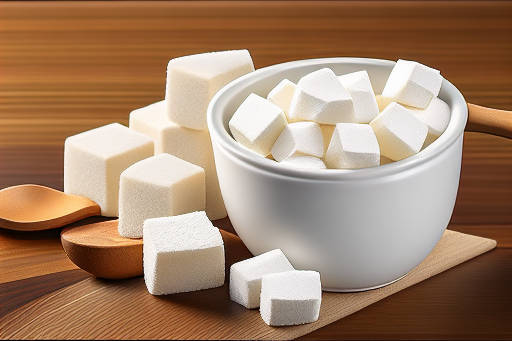Internationally renowned health expert Barbara O’Neal introduced seven alkaline-forming foods to include in our diets to help maintain an environment that naturally protects the body from cancer and other diseases. In this, Barbara shifts focus to discuss eight acid-forming foods to limit or avoid for optimal health.

Before diving in, let’s briefly review why maintaining a healthy pH balance is crucial. The body’s pH level significantly influences disease progression. While blood maintains a slightly alkaline pH of 7.35–7.4, a cellular pH of 5.5 creates an environment where diseases like yeast infections, fungal overgrowth, and cancer thrive. Cancer not only “loves” an acidic environment but also thrives in low-oxygen conditions and when glucose levels are high. Therefore, a holistic approach to combatting cancer includes a diet rich in alkaline-forming foods, methods to oxygenate the body, and minimizing sugar intake.
Having covered the foods that promote alkalinity, let’s now examine eight common acid-forming foods that should be reduced or avoided.
What Are Acid-Forming Foods?
Acid-forming foods are high in minerals such as phosphorus, sulfur, and chlorine. When consumed in excess, these foods increase the body’s acid load. Let’s explore these foods in detail.
1. Meat
Meat is a primary acid-forming food due to its high levels of protein and phosphorus. Dr. Colin Campbell’s research demonstrated how cancer cell activity could be “switched on or off” by adjusting the intake of meat and dairy in animal studies. Red meat and processed meats, in particular, are staples of the Western diet and contribute significantly to acid formation in the body.
2. Wheat
Hybridized wheat is another major source of acid-forming minerals. Historically, ancient grains like einkorn had fragile gluten structures, making them easier to digest. However, crossbreeding practices in the 1950s resulted in modern hybridized wheat with complex protein and gluten structures, which are much harder for the digestive system to break down. This explains the rise in gluten intolerance, with symptoms like brain fog and bloating becoming increasingly common. Unfortunately, modern diets heavily rely on hybridized wheat in foods like bread, pasta, cookies, and cereals.
3. Caffeinated Foods and Drinks
Caffeine-rich products, including coffee, tea, energy drinks, and some sodas, contribute to acidity. Excessive consumption can deplete the body of essential alkaline minerals like sodium, potassium, magnesium, and calcium. This depletion can weaken the body’s buffering systems, making it more susceptible to chronic and degenerative diseases. Moreover, caffeine often accompanies sugar, compounding its acid-forming effects. For instance, Coca-Cola has an alarmingly low pH of 2.6, making it highly acidic and harmful.
4. Refined Sugar

Refined sugar is particularly acid-forming due to its impact on the body’s metabolism. Although sugar itself is pH-neutral, its breakdown in the liver produces acidic byproducts like lactic acid and acetic acid. This process depletes vital alkaline minerals such as calcium, magnesium, and potassium, which are crucial for neutralizing acids. Furthermore, sugar fosters the growth of acid-producing gut bacteria and triggers inflammation, creating an even more acidic internal environment. High sugar intake also promotes insulin release, which can lead to increased mineral excretion and further acidity.
5. Aged Cheese
Aged cheeses, including blue vein varieties, are highly acid-forming. The mold in these cheeses contributes to their acidic properties. While fresher cheeses like cottage cheese or ricotta are less acidic, they are still not ideal due to their origin from dairy, which is generally acid-forming. Dairy products produce acidic compounds during digestion and metabolism, placing a higher acid load on the kidneys.
6. Alcohol
Although not a “food,” alcohol significantly contributes to an acidic environment in the body. When metabolized, alcohol produces acetaldehyde, a neurotoxin that can harm brain cells. Chronic alcohol consumption also disrupts the body’s pH balance and negatively affects overall health. Similarly, tobacco products, while not food, have comparable acid-forming effects.
7. Grains
Most grains, aside from a few exceptions, are acid-forming. Grains other than those on the alkaline side (like millet or quinoa) should be consumed in moderation to maintain pH balance. Their high phosphorus and sulfur content make them more acidifying.
8. Legumes and Nuts
While legumes and nuts are generally healthy, many varieties are acid-forming. Exceptions include lima beans, lentils, and soy, which have more alkalizing effects. Similarly, almonds and Brazil nuts are less acid-forming compared to other nuts, which can contribute to acidity when consumed in large amounts.
Should You Eliminate All Acid-Forming Foods?
The good news is that you don’t need to eliminate acid-forming foods entirely. Striking a balance is key. Ideally, your diet should consist of 70–80% alkaline-forming foods and 20–30% acid-forming foods. This ratio helps maintain the body’s natural pH balance, providing a supportive environment for overall health.
When selecting your 20% of acid-forming foods, aim for those with nutritional benefits, such as whole grains, legumes, and certain nuts, rather than processed or refined options. For the 70–80% alkaline-forming portion, prioritize greens, fruits, and other plant-based options known for their alkalizing properties.
Conclusion
Maintaining a healthy pH balance in the body is essential for preventing diseases and supporting overall wellness. By minimizing the intake of acid-forming foods—such as meat, wheat, caffeine, refined sugar, aged cheese, alcohol, grains, and certain legumes and nuts—you can create a more alkaline environment. Combined with regular consumption of alkalizing foods, this approach promotes optimal health and helps the body protect itself from chronic illnesses, including cancer. Remember, balance is the key to a sustainable and healthful diet.
